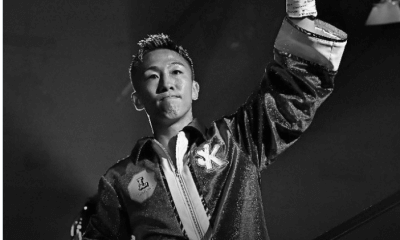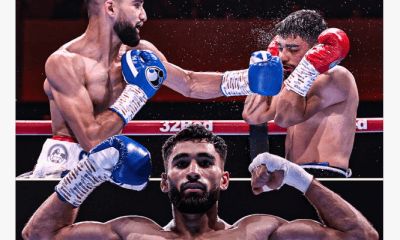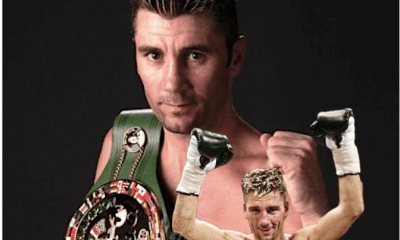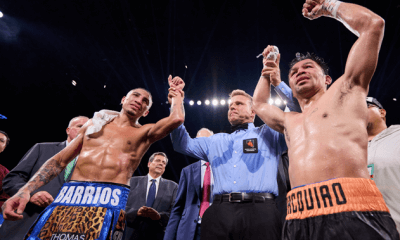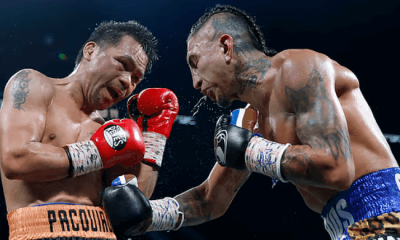Featured Articles
The Top Ten Welterweights of the Decade: 2010-2019
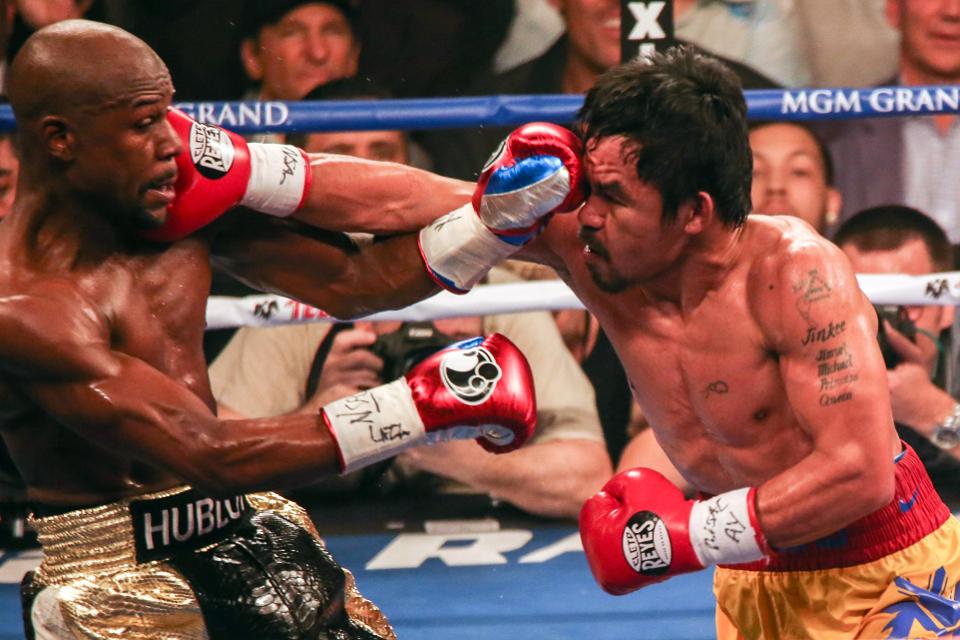
The Top Ten Welterweights of the Decade: 2010-2019
147lbs has proven as fascinating as ever. We open with a series of fighters who have visited, rather than made a home in the division but who have made serious marks in small windows; drop in on some divisional homeboys who made indelible marks upon welterweight with prolonged stays; before separating the two divisional dons at the poundage, the indisputable top two who also happen to be two of the greatest fighters ever to have drawn breath.
154lbs remains my favourite divisional review in terms of footage, but 147lbs ran it close.
Rankings are by Ring for 2010 to 2012 and TBRB thereafter.
10 – Danny Garcia
Peak Ranking: 5 Record for the Decade: 20-2 Ranked For: 41% of the decade
Picking out a number ten was as difficult as ever and here’s what it boiled down to: Danny Garcia beat Robert Guerrero and Robert Guerrero beat Andre Berto and Andre Berto beat Victor Ortiz thus bring Danny out on top of the string of matches between the four guys considered at one time or another for the number ten spot (the single brief evening I considered Amir Khan shall remain between me and my priest).
So while Garcia pulled the ancient trick of putting together a decent resume at the poundage by bringing up smaller men to the target division (Lamont Peterson in a catchweight) and formerly ranked contenders past their prime (Paul Malignaggi, Brandon Rios) and performed admirably, it’s his 2016 victory over Guerrero that really cements the spot for him here. Strange but true.
In fairness, Garcia was on wonderful form that night, drilling the #9 contender with single punches that sounded like pain, leading with rights to the body, that devilish hook to the head, straight right hands over the top. Guerrero helped him by holstering his jab and following him, waiting for his size to somehow count but Garcia’s pivoting footwork whenever Guerrero finally cornered him was almost balletic in its beauty. Not that Garcia ran. Rather he staged a fighting retreat of no small note. Garcia is borderline but he has a performance as good as almost any of the fighters above him in the shape of the Guerrero dissection.
09 – Terence Crawford
Peak Ranking: 2 Record for the Decade: 26-0 Ranked For: 14% of the decade
It was a delight to watch Terence Crawford find his way into the welterweight division in his 2018 confrontation with Jeff Horn, the Australian who had taken a decision from Manny Pacquiao the year before. Crawford, who is not averse to an early start comprised of a watching brief, could be seen to ease his way into the bigger divisional waters: in the third, he was clear that it had become his territory, and he proceeded to dismantle Horn accordingly. Crawford treated Horn as he found him: a good fighter who had got lucky against Pacquiao while he, Crawford, was a great fighter.
That, Crawford is, but that is an appraisal based mainly upon successes he has had in the lower weights. Up at 147lbs, his big win is that victory over Horn and second is probably his similarly dominant performance against ranked contender Egidijus Kavaliauskas. Crawford’s nine round brutalisation of Kavaliauskas (check out the devastating seventh round if you haven’t) was one of the last important fights of 2019 and it is probable Crawford wouldn’t have ranked without it. Interestingly, one of the men with an argument to replace him would have been Jeff Horn, who, after all, defeated Manny Pacquiao. Briefly: I struggle to find a card for Horn and cannot really add him to the list and then write about the four rounds he may have won against Manny and try to make an argument for divisional legacy based upon it.
So Horn misses out altogether and Crawford slips in at nine, a gorgeous fighter who spreads his weight across a beautifully marshalled base to allowing retreating counters as slick as any thrown by any active fighter other than Lomachenko: he’ll likely rank a lot higher on the corresponding 2020-2029 list. During these troubled times as we come to terms with the Covid-19 outbreak, let me take a moment to share my hope that you are able to join me for those top tens as you are for these.
08 – Juan Manuel Marquez
Peak Ranking: 2 Record for the Decade: 6-2 Ranked For: 14% of the decade
It dawned on me that Juan Manuel Marquez would rank among the decade’s best welterweights slowly, but when I realised, I was delighted. Marquez is among my favourite fighters.
His case as a decadal top ten is all but airtight based, like Garcia, overwhelmingly upon a single performance: his devastating sixth round knockout of Manny Pacquiao. This was the fourth fight between the two and the second in the welterweight division. The third, the second at welterweight, was a controversial decision in favour of Pacquiao (I had Marquez winning close but clear) and it storied Juan Manuel’s approach for their fourth fight. Having won zero of their three previous wars, even though all were excruciatingly close, Marquez set out to knock his nemesis out. The result was the most spectacular stoppage of the century in this or any other division.
Marquez, in the far reaches of his beginnings, was a counter-punching box-mover, a safety first fighter who was nothing like as beloved as his blood and guts compatriots Erik Morales and Marco Antonio Barrera. Here, in the twilight of his career, he completed his transmutation into a face-first pressure fighter, albeit one who is baiting for counters. Marquez stayed in range and allowed himself to be hit by the most terrifying combination puncher of his era while remaining defensively responsible.
Truthfully, Marquez’s pathology was far more savage. He would later confirm that the right hand was the punch they had trained for and the punch they were looking for. One has to be careful examining a fight retrospectively, but it does feel an awful lot like the Marquez left-hook works as a shepherding punch in this fight. Drilled repeatedly by power punches in the second round, Marquez was also finding the range for his own right. The trap was sprung in the third; for the first time in thirty-nine rounds, Marquez had dumped Pacquiao on his backside. The danger in this strategy was illustrated beautifully when Pacquiao returned the favour in the fifth before, bloodied and behind on the cards, Marquez landed the punch of the century to render Pacquiao unconscious.
Marquez only had a handful of other fights at the poundage and was unlucky; I think he should have received the nod in the first welterweight contest with Pacquiao and I scored his loss to Timothy Bradley a draw that clearly could have gone in the Mexican’s favour after an astonishing, brilliant rally in the second half of that fight. So a higher ranking was not out of the question; eight is where he lands.
07 – Kell Brook
Peak Ranking: 1 Record for the Decade: 18-2 Ranked For: 82% of the decade
It does not sit particularly well with me, ranking Kell Brook above great fighters like Juan Manuel Marquez and Terence Crawford but this is a timely reminder that this is a decadal divisional ranking; check the “Ranked For” entries for each of these three and note the vast difference.
Brook first appears in the Ring rankings in 2011; he slipped out of the TBRB rankings in the last month of 2019. He was doing fine work, too, before 2011 in the shape of British title fights and fights for some of the more ludicrous, regional alphabet titles against solid competition like Philip Kotey and Lovemore Ndou.
But like so many British fighters before him, Brook had to travel to the USA to put the real feather in his cap. His 2014 confrontation with Shawn Porter in Carson was a difficult fight that was difficult to score and that revealed both Brook’s great strengths and great weaknesses. Outworked, outhustled, broken from his rhythm early, Brook rallied busted back with skill, heart, and poise and took six rounds on my card for the draw; the judges gave it to him by majority decision.
As shall be seen, I consider Porter the most underrated welterweight of the decade and Brook’s victory over him is special, however close it may have been. It was a marquee win for a fighter bereft of world class opposition who likely could have done good work with the best in the division.
Keeping in mind, also, that the only loss of his welterweight career came against Errol Spence; nobody else beat him.
06 – Shawn Porter
Peak Ranking: 2 Record for the Decade: 18-3-1 Ranked For: 65% of the decade
For each of these divisional decadal top tens I have run across a fighter I was previously guilty of underrating and at welterweight that fighter is Shawn Porter. Porter will probably surprise with his sixth placed ranking, especially a slot above the man who beat him, Kell Brook, but as you have read, I do not consider that their combat settled the issue of who was the better fighter over twelve; Brook got the nod and that is honoured, but what rests upon the other side of the scale?
Simply put, Porter beat more ranked fighters in the decade gone by than any fighter ranked outside the top two. It is not quite the number three resume, as we shall see, but it’s a fine one and honestly built.
Porter first caused ripples with his ugly, relentless style against Devon Alexander in 2013, out-and-out bulldozing the boxer out of the fight with relentless hooking pressure. Alexander just wasn’t equal to the Porter conundrum physically, and he dropped a competitive decision to a fighter who had marked himself on the up. Still more impressive in his next fight, Porter jabbed with Paulie Malignaggi and married what is an underrated weapon to his arsenal against a sliding fighter who remained ranked; Porter got him out of there in four rounds, more quickly than anyone before or since.
His finest victory was over number five contender and fellow top-ten alumni Danny Garcia. Garcia was favoured, slightly, to win that fight, and looked like he might as Porter, clearly spooked, told his trainer and father after the first round that he could “feel” Garcia ready to punch and it cost him early. Porter tucked a swathe of the middle rounds under his belt when he finally got his pressure rolling though to take a narrow decision in a fine fight. Porter makes boxers suffer.
After creeping past Cuban contender Yordenis Ugas, he dropped a close one to Errol Spence. Close fights are Porter’s bane; a good chin and a great work rate are undermined by an engine merely good and a technically sure jab is undermined by untidy swarming work with many of his other punches. He could never be dominant and dropped three close decisions during this run; but he squeezed every single bit of value out of 2010-2019 and that puts him, deservedly, just outside the top five.
05 – Keith Thurman
Peak Ranking: 2 Record for the Decade: 17-1 Ranked For: 58% of the decade
The joke is that Keith “One Time” Thurman carries his nickname based upon the frequency with which he likes to fight in any given year. While that is a little harsh, it is a fact that inactivity has probably hurt the Floridian more than his points loss to the immortal Manny Pacquiao in July of 2019.
Before that, Thurman stood unbeaten although the margins were often narrow. While his arrival in top tier boxing against Jan Zaveck back in 2013 was a cakewalk, Thurman’s two signature wins, both coming against men on this list, were desperately close affairs that could easily have gone against him.
Despite that, he appeared the superior fighter. He seemed both faster and sharper than Shawn Porter in their 2016 contest, landing a gorgeous array of single shots, but consistently allowed himself to be kicked out of rhythm and outworked by Porter’s less attractive surges. He took a narrow unanimous decision. Closer still was his 2017 split decision victory over Danny Garcia, who he out-popped early to take a commanding lead only to let Garcia smuggle his way back into the contest with counter-lefts to the body while trying to deploy his own jab, an underwhelming one.
But it is a fact that Thurman outlanded Garcia and did by far the cleaner, more attractive work against Porter. If he re-emerges from the Pacquiao defeat a better, busier fighter, the top five for a second consecutive decade is far from beyond him.
04 – Timothy Bradley
Peak Ranking: 2 Record for the Decade: 8-2-1 Ranked For: 50% of the decade
To get it out of the way, I consider Timothy Bradley’s June 2012 victory over Manny Pacquiao an out-and-out robbery and do not acknowledge the victory here for ranking purposes. Still, Bradley’s achievements up at 147lbs were significant, and it should be noted that although Pacquiao defeated him three times, no other fighter was able to do so.
Juan Manuel Marquez came the closest when the two met in October of 2013 a fight which could have been scored any one of three ways but was in no way outrageous in being scored for Bradley. It underlined the strengths to Bradley’s game, high energy boxing, some volume punching, a fine jab, not to mention heart, chin and guts. It was the key win in Bradley’s welterweight resume, although in Ruslan Provodnikov, Jessie Vargas and Brandon Rios he has victories to be proud of.
Despite all of this I personally never found Bradley’s style of boxing particularly appealing and as a UK fight fan I found it more and more difficult to sit up until four or five in the morning to watch him. It may be that I held the Pacquiao I judging against him which is grossly unfair: the winner of a badly judged fight is every bit as much the victim as the loser.
For all that, Bradley is probably unassailable in the top four and there is a certainty surrounding his placement that perhaps Keith Thurman does not enjoy.
03 – Errol Spence
Peak Ranking: 1 Record for the Decade: 26-0 Ranked For: 37% of the decade
Unbeaten in the decade, his entire career so far boxed at welterweight, Errol Spence also carries with him two outstanding victories over other men to rank in this decadal top ten in the shape of Kell Brook and Shawn Porter.
The Brook fight, held in 2017, was the Spence coming of age and to be fair to Brook, he was right there with the American until the seventh round, when Spence hurt him and assumed generalship. Excellent footwork and near supernatural balance left him in punching position throughout but it was the maturity of Spence’s performance that surprised. He brought serious pressure behind a high guard, using faster feet to force the British fighter to hit gloves; when he opened up his speed was superior, his timing was superior, his jab, bodywork and straight punches were superior. During Brook’s best rounds Spence took his punches and went straight back to work. His first real test, it was a tough one and he passed it by way of stoppage, the second man after Gennadiy Golovkin to turn that trick.
After mercilessly beating Lamont Peterson (ranked 8) into submission early in 2018, he completely outclassed the 140lb champion Mikey Garcia before matching Shawn Porter. This is the key fight in Spence’s career, and it comes right at the end of the decade and it proved key matters: Spence could stand in fire and punch back – he proved it over and again but especially in the third, finding precision shots under mounting pressure. He also proved he had the power to bail him out late, should he need it, scoring with a superb left-hook from square in the pocket to add the cherry on the cake in the form of a knockdown. He earned the split decision he received, 115-112 on my card.
Then Spence did something stupid: he crashed his car and was later charged with DUI. The division awaits his full recovery with bated breath – Spence seemed destined to be the next king.
02 – Manny Pacquiao
Peak Ranking: Ch. Record for the Decade: 12-4 Ranked For: 100% of the decade
It is second place for Manny Pacquiao and I’m afraid it’s not really arguable, though it is close.
Early in 2010 Manny Pacquiao beat Joshua Clottey, then ranked among the ten best welterweights in the world, with such ease that he was able to add the occasional comedy styling for the frustrated and enormous crowd crammed into the Dallas Cowboys American football stadium. He did not lose a round. Over nine years later, some twenty years after he won his first title, Manny Pacquiao faced up to Keith Thurman, a man, as we have seen, who is appraised one of the most significant welterweights of the decade. Manny, out-reached, shorter and almost forty-one years of age, scraped a win by a single point, bookending the divisional decade with significant wins over made men. This is an astonishing achievement and it is almost unthinkable that this can occur and we do not get to refer to it as “a decade of dominance”.
The reason, of course, is Floyd Mayweather – we will get to that. In the meantime let’s look at the rundown of the men Manny out-manned, out-fought, out-hit and out-sped during a decade where he cemented an all-time pound-for-pound legacy that will echo into the next century and beyond.
After winning every round against Joshua Clottey, he repeated that trick against Shane Mosley before being run close by his great rival Juan Manuel Marquez. After being robbed on the cards against Timothy Bradley, the most brutal knockout of the century so far was perpetrated against him by Marquez at which point it seemed possible that Manny was finished at the highest level. Instead he added legitimate welterweight scalps like Brandon Rios, Jessie Vargas, Timothy Bradley twice, before that dust up with Thurman, who we will allow the last word on the welterweight legacy of Manny Pacquiao.
“Manny Pacquiao is a truly great, legendary champion.”
01 – Floyd Mayweather
Peak Ranking: Ch. Record for the Decade: 10-0 Ranked For: 55% of the decade
When Manny Pacquiao was knocked unconscious by Juan Manuel Marquez, a man Floyd Mayweather had toyed with, the number one welterweight for the era was probably decided, but remained arguable – Pacquiao, after all, barely edges out Mayweather in terms of major welterweight scalps taken.
When the two met in the middle of the decade and Mayweather triumphed at a canter, the matter was incontrovertibly settled. It is true that Manny carried an injury with him that night, and it is true that Mayweather had adapted even better than him to the ravages of pugilistic old age, but it is also true that Mayweather took control of ring centre and countered and controlled his power-punching foe with ease for long stretches. Re-watching the fight this week I was struck both by how much more exciting and how much closer it was than I remembered, but there is no question of which of these two men is the superior pugilist. What “might have happened” four years earlier is always eclipsed by what did happen in the harsh glow of the ring lights.
Mayweather’s next best welterweight win is likely Miguel Cotto, who troubled him a little and even bloodied him up but who he also consistently out-popped throughout. It is a mark of Mayweather’s excellence that he works so well at ranges where the opposition is supposed to be superior; that where the key for other fighters of his type has been not to allow them to make the range, for him, that is not the case. He can allow them to make the range, control a portion of their time there before firmly and consistently out-hitting them at range. This generalship, or ring IQ in the parlance of today, is more than generational. Mayweather is one of the great ring generals in history. What this means is that when Mayweather’s legs began to betray him, it didn’t matter. He just ramped up on pivoting, countering the counters, slipping, moving but always, always outlanding.
A savage when called upon, he happily knocked out Victor Ortiz in controversial circumstances after suffering a headbutt in close, completely out-boxed Shane Mosley after being stunned by the hardest punch he swallowed that decade, enjoyed a narrow then a wide decision over Macros Maidana, thrashed Robert Guerrero.
All of these men appeared in the divisional top five when he met them. Some of them were on the pound-for- pound list. It all adds up to his holding the number one spot unassailably, more firmly even than his grip up the number one spot at 154lbs.
The other lists:
To comment on this story in The Boxing Forum CLICK HERE
-

 Featured Articles4 weeks ago
Featured Articles4 weeks agoThe Hauser Report: Zayas-Garcia, Pacquiao, Usyk, and the NYSAC
-
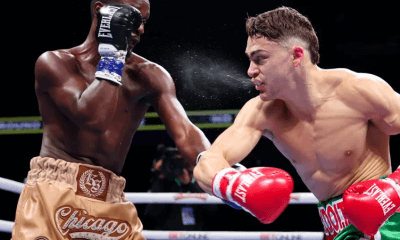
 Featured Articles3 weeks ago
Featured Articles3 weeks agoOscar Duarte and Regis Prograis Prevail on an Action-Packed Fight Card in Chicago
-
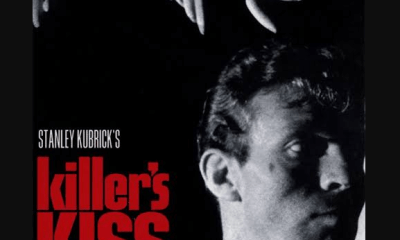
 Featured Articles2 weeks ago
Featured Articles2 weeks agoThe Hauser Report: Cinematic and Literary Notes
-
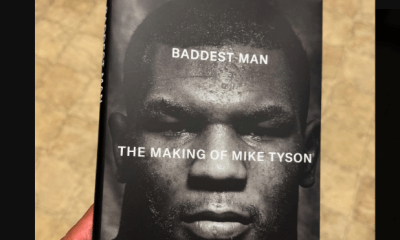
 Book Review2 weeks ago
Book Review2 weeks agoMark Kriegel’s New Book About Mike Tyson is a Must-Read
-

 Featured Articles4 weeks ago
Featured Articles4 weeks agoRemembering Dwight Muhammad Qawi (1953-2025) and his Triumphant Return to Prison
-
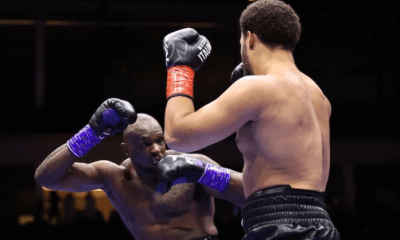
 Featured Articles7 days ago
Featured Articles7 days agoMoses Itauma Continues his Rapid Rise; Steamrolls Dillian Whyte in Riyadh
-
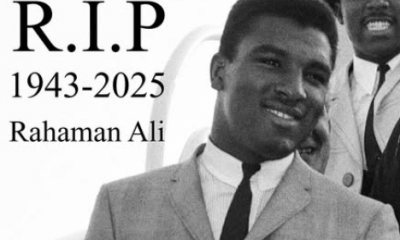
 Featured Articles3 weeks ago
Featured Articles3 weeks agoRahaman Ali (1943-2025)
-

 Featured Articles3 weeks ago
Featured Articles3 weeks agoTop Rank Boxing is in Limbo, but that Hasn’t Benched Robert Garcia’s Up-and-Comers


